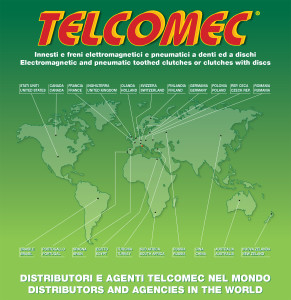Today we present the Telcomec case study success story; Telcomec specializes in the design and manufacture of electromagnetic and pneumatic tooth and disc clutches and brakes.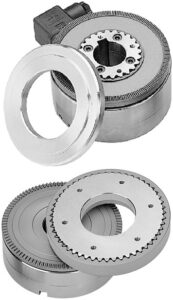
The case study shows how their ability to design innovative and customized solutions was decisive in producing useful and winning solutions for the ophthalmic industry.
The solution developed by Telcomec enjoys very high customer satisfaction due to the following benefits (a more detailed description will follow later):
- Reduced costs achieved by simplifying the assembly process and eliminating a considerable number of components;
- Greater stability of the multi-station rotary table that houses the ophthalmic instruments thanks to a significant improvement of the holding torque;
- Significant improvement in the performance of the optical instruments thanks to the greater stability of the multi-station rotary table that houses the ophthalmic instruments.
Here with us today we have Vincenzo Tomasi (one of the founding members of Telcomec), whom we thank; we are going to ask him some questions to understand in better detail the key elements that led their customer to choose the Telcomec solution.
What was the challenging request that the customer had for Telcomec?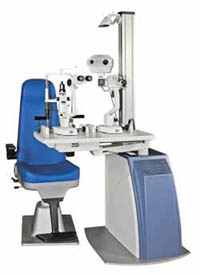
Our customer, an international leader in the production of machines and tools for the ophthalmic industry, requested the following:
- Solve the problem of stability of the multi-station rotary table that houses ophthalmic instruments, which are pressured/pushed by patients during eye examination;
- Simplify the structure of the machine and therefore its assembly;
- Reduce production costs.
What were the main issues?
Telcomec was asked to provide a more compact solution that would offer superior blocking performance, so as to obtain the needed stability of the ophthalmic instrumentation during patient visits. To better understand the customer’s request, we should describe the blocking technology of the multi-station rotary table that houses the ophthalmic diagnostic instruments. It used to be a technological solution that employed large electromagnets and numerous mechanical components but failed to deliver optimal table blocking performance; which meant doctors visiting patients with an ophthalmic instrumentation that was not perfectly stable. This entailed the risk of having to repeat the diagnostic procedure.
What alternative solutions did you propose and what were the factors that enabled Telcomec to get the job?
Telcomec worked with the customer to design a tailor made, more compact solution to provide superior performance in terms of blocking and stability of the ophthalmic instrumentation during patient visits, namely, an electromagnetic tooth brake without play.
This solution enabled us to deliver the following:
- Double the blocking performance of the multi-station rotary table that houses the diagnostic ophthalmic tools, making it much more stable and thus enabling eye doctors to make better patient vision measurements, which means greater efficiency of course;
- Knock down equipment assembly time and costs thanks to very simplified hardware;
- Reduce the clutter of the components inside the machine, thanks to a single electromagnetic tooth brake without play, which replaces large electromagnets and numerous mechanical components.
In detail, the solution is as follows:
- 1 electric coil;
- 1 body with front teeth;
- 1 toothed plate with spring release disc;
- Blocking torque guaranteed to be equal to 200 Nm (Newton Meters).
Mr. Tomasi, could you explain how this actually works?
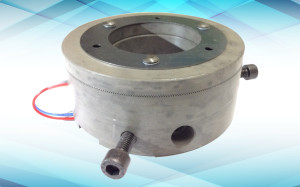 Certainly. The blocking brake is engaged by powering the electrical coil inserted in the body with the front teeth, which generates a magnetic field that attracts together the front teeth of the body and of the toothed plate with the spring disc.
Certainly. The blocking brake is engaged by powering the electrical coil inserted in the body with the front teeth, which generates a magnetic field that attracts together the front teeth of the body and of the toothed plate with the spring disc.
This solution provides a blocking torque of 200 Newton Meters, which in practice means a very high stability of the central shaft on which the rotary table is mounted.
This solution ensures more precise vision measurements, including when patients apply high pressure on the tools.
The rotation and selection of a new work station/ophthalmic instrument occurs when power to the electrical coil is interrupted and the spring releases the toothed plate. This is done with a simple remote control.
I recommend taking a look at the following video to better understand the concept; at 2:57, there is an overview of how electromagnetic clutches operate.
How did the customer benefit by giving the job to Telcomec?
The benefits go both to our customer and to the doctors who will use the ophthalmic instruments housed on the multi-station rotary table.
The customer’s main advantages were the following:
- Increased productivity by reducing the components to be mounted;

- Cost reduction and consequent increase in profitability;
- Greater machine reliability over time, with less maintenance needed;
The eye doctors’ main advantages are the following:
- More effective eye examinations through more accurate vision measurements thanks to the high stability of the multi-station rotary table that houses the ophthalmic instruments;
- Greater efficiency means reduction of costs because there is no need to repeat a visit due to vibrations or movements of the multi-station rotary table induced by the pressure exerted by a patient on the ophthalmic instruments;
- Increased productivity.
In general, what are Telcomec’s distinctive features?
- Designing customized solutions;
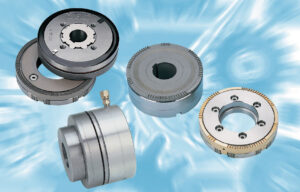
- Continual research and development of innovative solutions with better performance;
- Over twenty years’ experience gained in a variety of sectors;
- A wide and complete range of products (electromagnetic and pneumatic tooth and disc clutches and brakes);
- Widespread international presence;
- Spare parts in stock and speedy delivery;
- Flexible production in terms of volumes (also in limited numbers);
- 100% Made in Italy design, development, and products;
- Belonging to the most important mechanical district in Italy.
In summary, what are Telcomec’s main strengths?
1. Constant investments in the research and development of better performing innovative solutions
- In 1993, Telcomec doubled its range of electromagnetic clutches and brakes, which is still growing;
- In 1996, Telcomec added a new line of pneumatic clutches and brakes, which is also still growing.
Continuously searching for better performing solutions led Telcomec to select new materials allowing for increased reliability and durability of both electromagnetic and pneumatic clutches and brakes.
2. Widespread international presence
Since 1993, Telcomec has enjoyed steady international development thanks to the reliability of its solutions. Today Telcomec is in over 30 countries worldwide.
3. 100% Made in Italy design, development and production of electromagnetic and pneumatic tooth and disc clutches and brakes
The electromagnetic and pneumatic tooth and disc clutches and brakes are entirely designed, developed and manufactured at the Telcomec factory in Bologna.
Do you have a similar problem that you would like to solve? Write to us or contact Vincenzo Tomasi directly at Telcomec.

